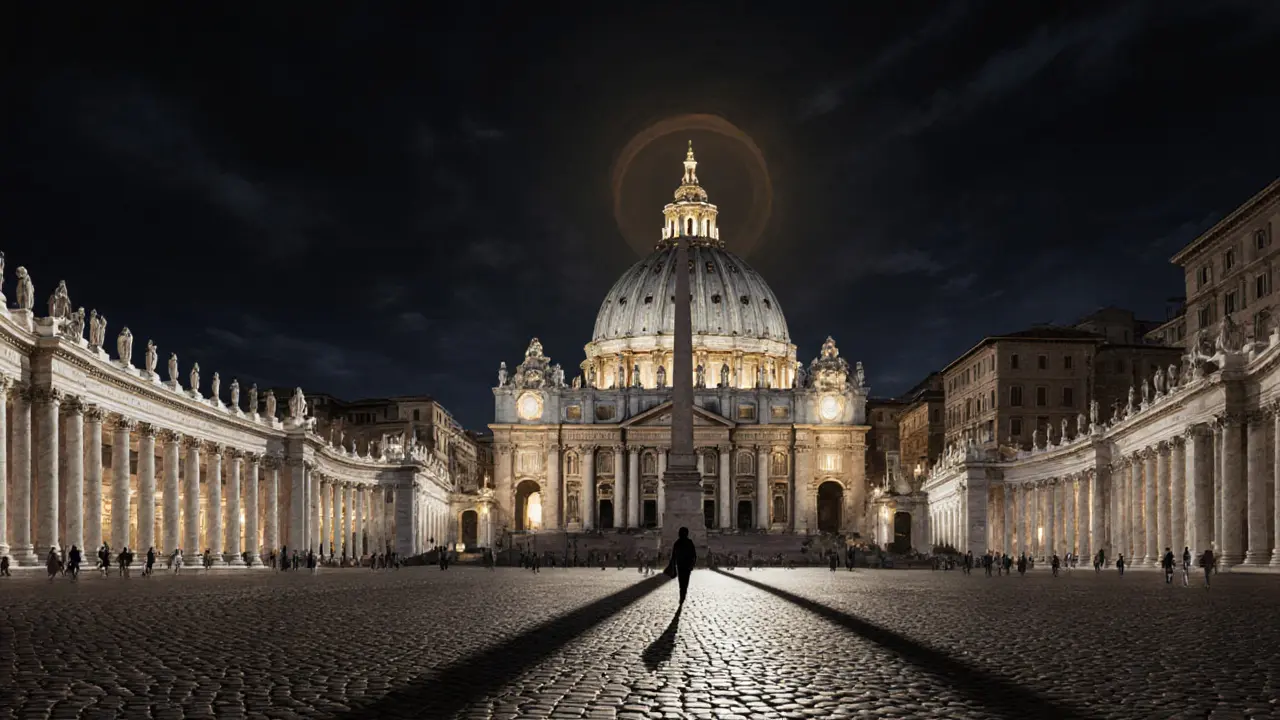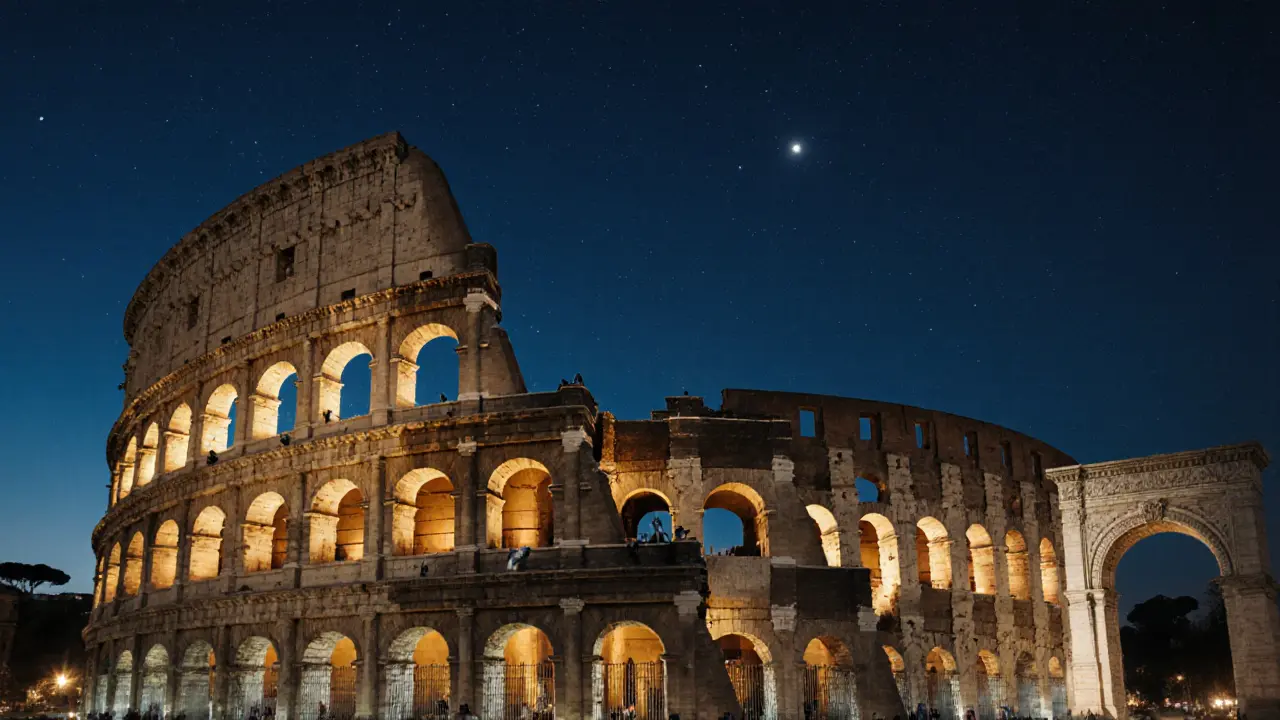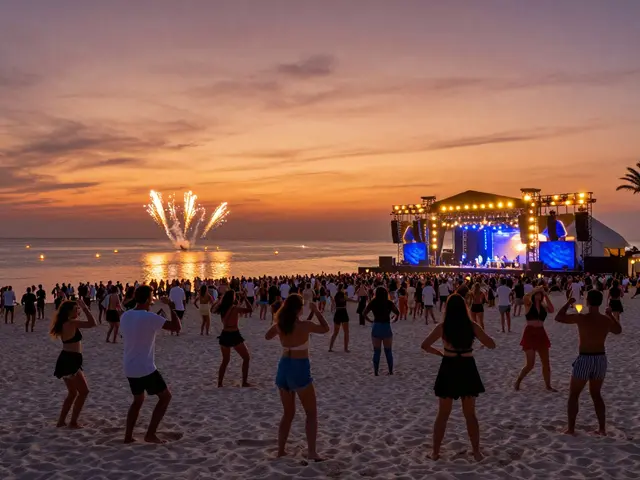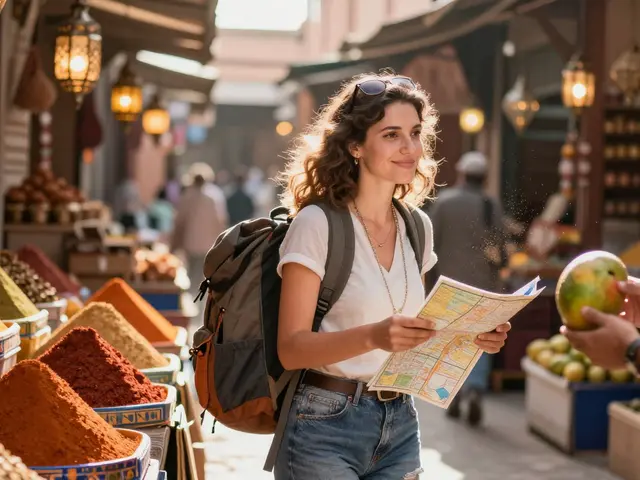When the sun dips below the hills of Rome, the city doesn’t sleep-it transforms. The same streets that buzz with tourists by day become quiet, glowing corridors of history, lit by soft lanterns and the warm glow of café lights. The Colosseum, once echoing with the roar of ancient crowds, now stands as a silent giant under the stars. The Trevi Fountain’s water shimmers like liquid silver, and the Vatican’s dome glows against the velvet sky. This isn’t just a different time of day. It’s a different Rome.
The Colosseum After Dark
You’ve seen the Colosseum in daylight-crowded, loud, sun-bleached. But at night, it’s something else entirely. Without the crowds, you can walk right up to its crumbling arches and feel the weight of two thousand years. The stone still holds the heat of the day, and the shadows between the tiers look deep enough to hide secrets. No one is shouting for tickets or snapping selfies. Just the occasional whisper of a passing couple, the distant chime of a church bell, and the rustle of pigeons settling into the cracks.
There’s no need to book a guided tour after dark. Entry is free from the outside, and you can wander the Piazza del Colosseo until 11 p.m. The lighting is subtle-just enough to highlight the structure without washing out its grit. If you stand near the Arch of Constantine and look back at the Colosseum, you’ll see it framed like a movie still. No filters. No edits. Just stone, shadow, and silence.
The Vatican Under the Stars
The Vatican Museums close by 6 p.m., but St. Peter’s Basilica stays open until 7 p.m. in winter-and the square? It’s open all night. Walk across the vast, cobblestone expanse of St. Peter’s Square and look up. The basilica’s dome, designed by Michelangelo, is lit from below, casting a golden halo that seems to float above the city. The columns lining the square, 284 in total, stand like silent sentinels. At night, they don’t just frame the space-they define it.
There’s no rush here. No line to enter. Just you, the echo of your footsteps, and the occasional priest walking toward the sacristy. If you’re lucky, you’ll hear the faint chime of the bells from the Campanile. It’s not loud-it’s more like a heartbeat. And when you turn around and see the obelisk in the center, bathed in the same light, you realize: this is one of the most perfectly composed spaces on Earth, and no one is here to take a photo of it.
The Trevi Fountain: Water, Light, and Legend
By day, the Trevi Fountain is a battlefield of selfie sticks and elbowing tourists. By night, it’s a dream. The water doesn’t just flow-it glows. LED lights beneath the surface turn the cascades into ribbons of blue, gold, and green. The statue of Neptune, surrounded by tritons and horses, seems to move in the flickering light.
The tradition of tossing a coin over your shoulder still holds. But here’s the truth: you don’t need to join the crowd. Walk around the fountain’s perimeter. Find a quiet corner near the Palazzo Poli. Sit on the low stone wall. Watch the water. People still toss coins, yes-but now, you can see the moment they close their eyes and make a wish. Some smile. Some sigh. Others just stare into the water, as if hoping it might answer.
And the coins? They’re collected every night. Over €1.5 million a year. That money funds charities across Rome. So when you toss a coin, you’re not just following a superstition-you’re helping keep the city alive.

Trastevere After Midnight
If you want to feel the pulse of modern Rome, head to Trastevere. This neighborhood, tucked across the Tiber, is where locals go after dinner. The narrow cobblestone streets are lined with tiny trattorias, wine bars with no signs, and open-air jazz sessions that spill onto the sidewalks. There’s no tourist map for this. You find it by following the smell of garlic and basil, or the sound of a mandolin.
Try Osteria da Fortunata. It’s been open since 1972. No menu. Just what’s fresh. The owner, Maria, will ask you where you’re from, then bring you a plate of cacio e pepe so perfect it feels like it was made just for you. The wine? It’s poured from bottles labeled only with the name of the vineyard and the year. No brand. No marketing. Just taste.
By 1 a.m., the crowd thins. The music fades. But the lights stay on. Because in Trastevere, night isn’t the end of the day-it’s when the real conversation begins.
The Pantheon: A Temple of Sky
Most visitors rush through the Pantheon during the day, craning their necks at the oculus. But at night, when the doors close and the guards turn off the floodlights, the real magic happens. The oculus-the only opening in the dome-doesn’t just let in light. At night, it lets in the stars.
On clear evenings, you can stand in the center and look straight up. The stars aren’t just visible-they’re close. The ancient Romans built this temple to honor all the gods. But at night, it feels like it was built for one thing: to let you see the universe.
The marble floor, worn smooth by centuries of footsteps, is cool under your shoes. The scent of old stone and incense lingers. You don’t need a guide to explain it. You just need to stand still. And wait.

Where to Eat When the Tourists Are Gone
Most restaurants in Rome close by 11 p.m. But a few stay open for the night owls. In Testaccio, Il Montecarlo serves carbonara until 2 a.m. The pasta is cooked al dente, the egg yolk still runny, the pecorino sharp enough to wake you up. It’s not fancy. It’s not Instagrammable. But it’s the kind of meal that makes you want to move to Rome.
Or try Pizzeria La Boccaccia near Campo de’ Fiori. They bake their pizzas in a wood-fired oven until 3 a.m. The crust is charred at the edges, the toppings simple-tomato, mozzarella, basil. No pineapple. No chicken. Just pizza, the way it’s meant to be.
And if you’re still hungry? Grab a gelato from Fatamorgana. Their pistachio is made with real Sicilian nuts. The flavor doesn’t hit you-it settles in. Like the city itself.
Why Rome at Night Feels Like Magic
It’s not the lights. It’s not the silence. It’s the way history doesn’t feel distant here. In Rome, the past isn’t locked behind glass or labeled with plaques. It’s alive. It’s in the stone you touch, the water you hear, the bread you eat. At night, the city lets you feel that without the noise.
You don’t need a ticket. You don’t need a guide. You just need to walk. And listen. And look up.
Rome by day tells you what happened. Rome at night lets you feel why it matters.
Is it safe to walk around Rome at night?
Yes, most central areas like the historic center, Trastevere, and around the Vatican are very safe at night. Stick to well-lit streets, avoid isolated alleys after midnight, and keep an eye on your belongings-just like you would in any major city. Pickpocketing is rare in tourist spots after dark, but it’s still smart to keep wallets and phones secure. Locals walk home late, and you’ll see plenty of people enjoying dinner or a nightcap well past midnight.
What time do attractions close at night?
Outdoor sites like the Colosseum, Trevi Fountain, and Pantheon are always accessible from the outside, even after official closing hours. The Colosseum’s exterior is lit until 11 p.m., and you can walk around the square until midnight. St. Peter’s Basilica closes at 7 p.m. in winter, but the square remains open. Indoor museums and archaeological sites close by 7 p.m. or earlier, so plan ahead if you want to go inside.
Can you visit the Vatican at night?
You can’t tour the Vatican Museums or Sistine Chapel at night-they close by 6 p.m. But you can visit St. Peter’s Basilica until 7 p.m. and walk freely through St. Peter’s Square any time. The square is one of the most breathtaking places in Rome after dark, with the basilica lit from below and the dome glowing against the sky. No ticket needed. Just show up and look up.
What’s the best way to get around Rome at night?
Walking is the best option. Rome’s historic center is compact, and many sights are within a 20-minute walk of each other. If you’re heading farther out-like from Trastevere to Termini-the night bus (N2, N3, N5) runs every 20-30 minutes until 5 a.m. Taxis are reliable and affordable after dark, especially if you’re with a group. Avoid unlicensed drivers offering rides near tourist spots.
Are restaurants open late in Rome?
Most restaurants close by 11 p.m., but a few in neighborhoods like Trastevere, Testaccio, and Monti stay open until 2 or 3 a.m. Look for places with locals still eating-there’s no better sign. Pizzerias are your best bet for late-night eats. Some even serve gelato after midnight. Don’t expect fancy menus-just honest, delicious food made for people who love to eat, no matter the hour.






The Colosseum at night? Of course it's 'magical'-but have you ever considered who controls the lighting? The EU-funded LED systems that illuminate the arches? They're not there for aesthetics-they're surveillance tools disguised as ambiance. The same ones that track your phone's Bluetooth signal as you walk past. Rome isn't enchanted-it's being monitored, and you're part of the data set.
And the coins in the Trevi? Don't be fooled. That €1.5 million? It doesn't go to charities. It gets funneled into private security contracts, contracted by the Vatican to keep the 'undesirables' away from the basilica after dark. You think you're contributing to the city? You're funding a surveillance state wrapped in Renaissance aesthetics.
The Pantheon's oculus? A perfect alignment with the stars? Or a deliberate architectural cipher? The Romans didn't build temples to gods-they built them to align with celestial powers that governed their control over the masses. You stand there, awestruck, and you don't even realize you're participating in a 2,000-year-old psychological operation.
Trastevere’s 'authentic' trattorias? Maria doesn't serve you cacio e pepe out of kindness. She's vetting you. Every foreigner who sits at her table is logged by an unmarked car parked two streets over. The 'no menu' policy? It's a filter. Only those who pass the unspoken test get the real food. The rest get tourist rations.
And the night buses? N2, N3, N5? They don't run every 20 minutes. They run on a schedule dictated by facial recognition algorithms that identify 'high-risk' individuals. If you're a lone male, 30-45, carrying a camera-you get a delayed bus. Or none at all. They don't want you lingering near the Vatican after midnight.
This isn't magic. It's control. Beautifully packaged. But still control.
OMG I JUST CRIED READING THIS 😭✨ I’ve never felt anything so beautiful in my life!! The Trevi Fountain at night?? Like liquid dreams!! 🌊💫 And the gelato from Fatamorgana?? I’m booking my flight RIGHT NOW!! 🛫🇮🇹 I’m telling my bestie we’re doing this next spring-no cap!! Rome at night is basically a fairytale that didn’t know it was real!! 🤍 #RomeAtNightIsMySoul
How can you call this 'magic' when it's clearly just the result of centuries of cultural superiority? The Romans didn't need fancy lights to make their architecture sublime. You modern tourists think you're experiencing something sacred? You're just taking selfies in front of a monument built by people who actually understood engineering art and civic order. This isn't a travel blog-it's a monument to human achievement and you're just a footnote with a phone.
And don't get me started on that 'authentic' Trastevere nonsense. The real Rome doesn't serve cacio e pepe to strangers-it preserves its traditions behind closed doors. The fact that you can walk into a restaurant and be handed a plate like you're entitled to it? That's not culture. That's commodification. The Vatican dome glowing? That's just state-sponsored religious propaganda dressed in golden light.
And yes I know what I'm talking about. I've been to Rome. I didn't need a guide. I didn't need to 'feel' anything. I stood there. I observed. I respected. You? You're just another consumer of history.
There’s something about Rome at night that doesn’t just sit with you-it lodges itself in your ribs, in your breath, in the quiet between heartbeats. I remember standing by the Colosseum once, just after midnight, and the air was so still it felt like the city itself was holding its breath. The stones weren’t just old-they were remembering. Every footstep, every whisper, every coin tossed into the Trevi-it’s all been absorbed into the stone, like ink into parchment. And you think you’re the first to notice? You’re not. You’re just the latest in a line of souls who’ve stood there, silent, trying to understand what it means to be small in the presence of something that outlived empires. I didn’t cry. I didn’t post it. I didn’t even take a photo. I just stood there until my shoes got damp from the mist rising off the fountain. And then I walked away. Not because I was done. But because I knew I’d never be the same.
I love how you described the Pantheon’s oculus at night-it made me think of my grandfather who used to say, 'The best things in life don’t need a flash.' He was a stonemason, built churches in rural Ohio. He’d say the same thing about old stone, how it holds time differently than anything else. I never got to Rome before he passed, but now I think I understand why he loved it so much. That feeling you get when you’re just standing there, looking up, and the world stops? That’s the real thing. No filter, no ticket, no tour guide. Just you and the stars. Thanks for writing this. I’m going to make sure my daughter reads it when she’s old enough to appreciate silence.
The coins? Charities? Please. Rome doesn’t need your donations. It needs respect. The city survived barbarians, plagues, and revolutions. It doesn’t need your Instagram filters or your late-night gelato selfies. Go home. Leave the stones alone.